 "ttyymmnn" (ttyymmnn)
"ttyymmnn" (ttyymmnn)
08/30/2019 at 12:35 • Filed to: wingspan, Planelopnik, TDIAH
 10
10
 24
24
 "ttyymmnn" (ttyymmnn)
"ttyymmnn" (ttyymmnn)
08/30/2019 at 12:35 • Filed to: wingspan, Planelopnik, TDIAH |  10 10
|  24 24 |
!!! UNKNOWN CONTENT TYPE !!!
Welcome to
This Date in Aviation History
, getting of you caught up on milestones, important historical events and people in aviation from August 28 through August 30.
!!! UNKNOWN CONTENT TYPE !!!
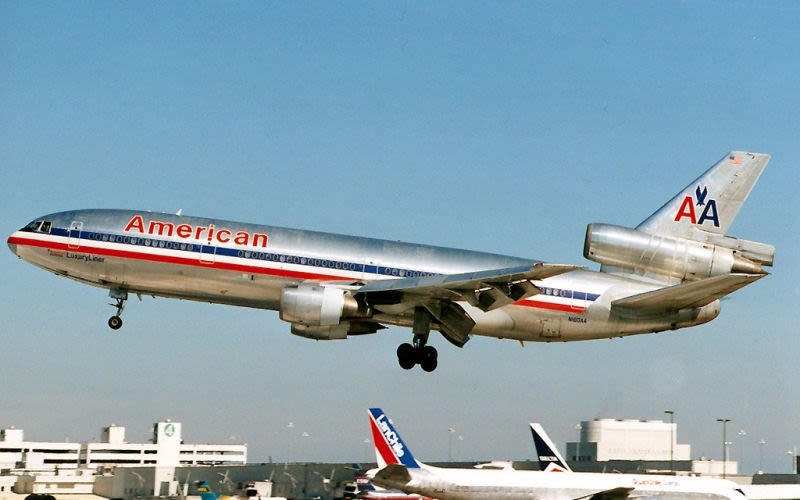 !!!CAPTION ERROR: MAY BE MULTI-LINE OR CONTAIN LINK!!!
!!!CAPTION ERROR: MAY BE MULTI-LINE OR CONTAIN LINK!!!
August 29, 1970 – The first flight of the McDonnell Douglas DC-10. In the 1960s, the US Air Force started looking for a large logistical aircraft as part of its CX-HLS program to replace the turboprop-powered !!!error: Indecipherable SUB-paragraph formatting!!! and to provide a larger strategic airlifter to complement to the !!!error: Indecipherable SUB-paragraph formatting!!! . Douglas began design studies to fulfill the Air Force request in 1967, but Lockheed was the eventual winner of that competition with their !!!error: Indecipherable SUB-paragraph formatting!!! . Having put so much time and money into the development a new large military transport, Douglas hoped to salvage something from their efforts by transforming their new aircraft into a large passenger airliner.
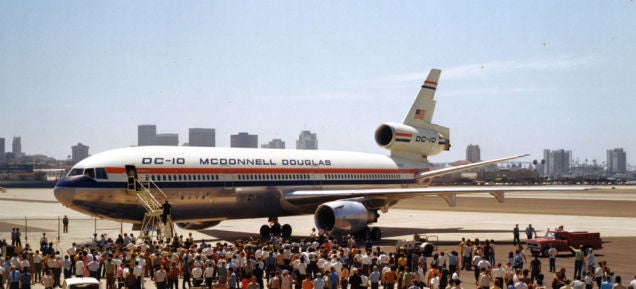
The DC-10 prototype (N803U) on display at Lindbergh Field, now San Diego International Airport (San Diego Air and Space Museum)
Ever-increasing numbers of passengers on domestic and international air routes indicated a need for larger airliners, and the move to wide-body airliners was the next step in airliner development. In light of the success of the world’s first wide-body airliner, the !!!error: Indecipherable SUB-paragraph formatting!!! , American Airlines announced a specification in 1966 for an airliner that would be somewhat smaller than the 747 and capable of operations from shorter air strips while still maintaining a similar range and payload. Beginning with the work they had done for the Air Force, McDonnell Douglas (the two companies merged in 1967) initially considered a four-engine, double-decker arrangement before settling on a wide-body single-deck configuration with three engines and accommodations for about 400 passengers. The DC-10 marked the combined company’s first foray into commercial jet aviation, and the DC-10 became one of the most recognizable tri-jet airliners. In 1968, American Airlines placed an order for 25 aircraft, followed by United Airlines with 30 orders and an option for 30 more. The first DC-10s entered service with American on August 5, 1971, and with United Airlines two weeks later.
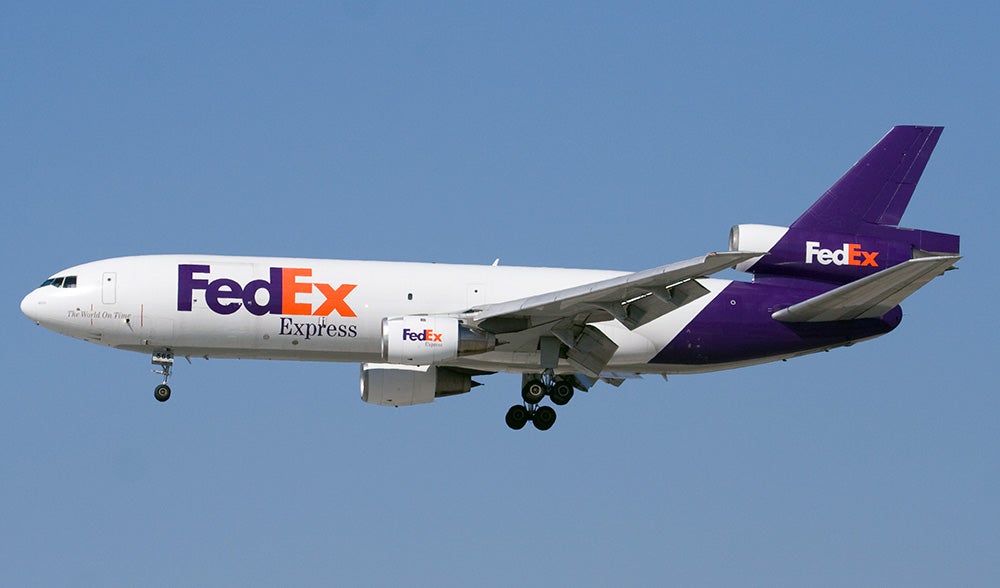 !!!CAPTION ERROR: MAY BE MULTI-LINE OR CONTAIN LINK!!!
!!!CAPTION ERROR: MAY BE MULTI-LINE OR CONTAIN LINK!!!
But McDonnell Douglas wasn’t the only manufacturer offering a triple-engined wide-body. Lockheed entered the fray with their !!!error: Indecipherable SUB-paragraph formatting!!! in 1972, so McDonnell Douglas hoped to entice buyers by offering engine configurations that provided different levels of range and economy based on the needs of the airline. The DC-10-10 model was considered the domestic version, while the DC-10-30 and DC-10-40 models were targeted at longer range international customers. Ultimately, because of delays in production and the higher cost of the Lockheed airliner, the DC-10 far outsold the L-1011. McDonnell Douglas ended up building a total of 386 DC-10s over a twenty-year production run, compared to 250 TriStars.
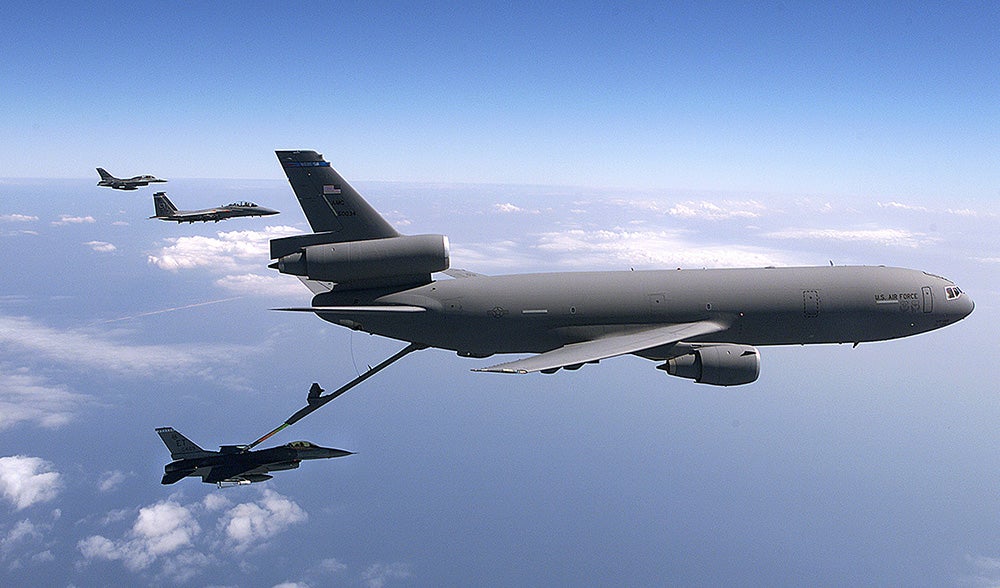
An F-16 Fighting Falcon from a KC-10 Extender of the 40th Flight Test Squadron, Eglin Air Force Base, Florida during Air & Space Power Expo ‘99. (US Air Force)
Early in its service life, the DC-10 garnered a reputation as an unsafe or dangerous aircraft. The airliner suffered a number accidents, including the crash of
!!!error: Indecipherable SUB-paragraph formatting!!!
in Chicago which claimed 273 lives and remains the single worst aviation accident in the United States. But continuous upgrades and improvements eventually put the DC-10 on par with other airliners for safety and reliability. The McDonnell Douglas wide-body saw its heyday in the 1970s and 1980s, and today it is flown primarily as a freighter. Following Boeing’s acquisition of McDonnell Douglas, some DC-1os have been fitted with updated avionics that remove the need for a flight engineer. These aircraft have been rebadged as the MD-10, while a stretched and upgraded version became known as the
!!!error: Indecipherable SUB-paragraph formatting!!!
. The DC-10 was also converted into an aerial tanker for the US Air Force known as the
!!!error: Indecipherable SUB-paragraph formatting!!!
, with a total of 60 being built.
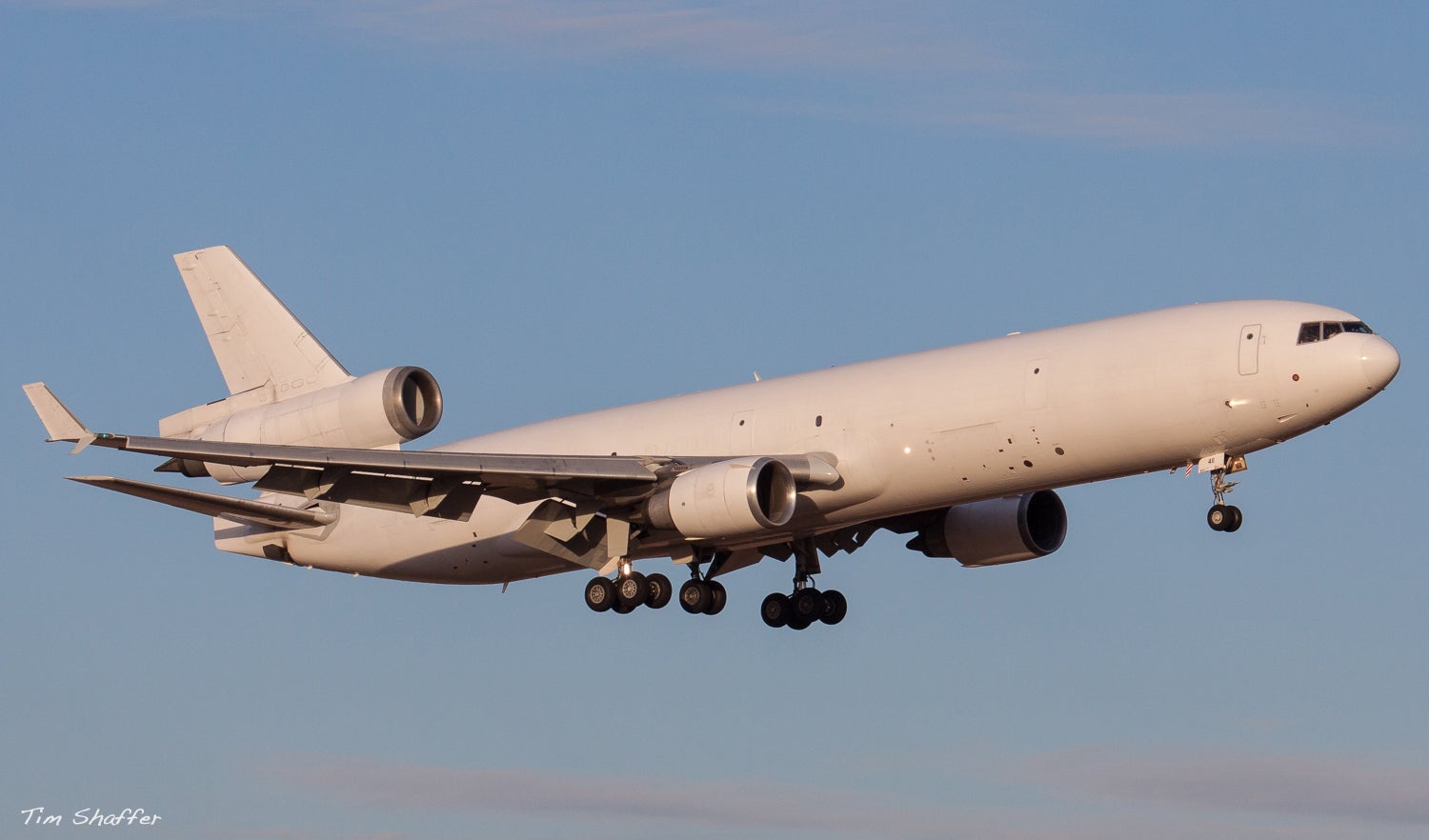
An MD-11 freighter lands at Dallas-Fort Worth Airport. The addition of winglets helps improve the efficiency of the wing. (Tim Shaffer)
!!! UNKNOWN CONTENT TYPE !!!
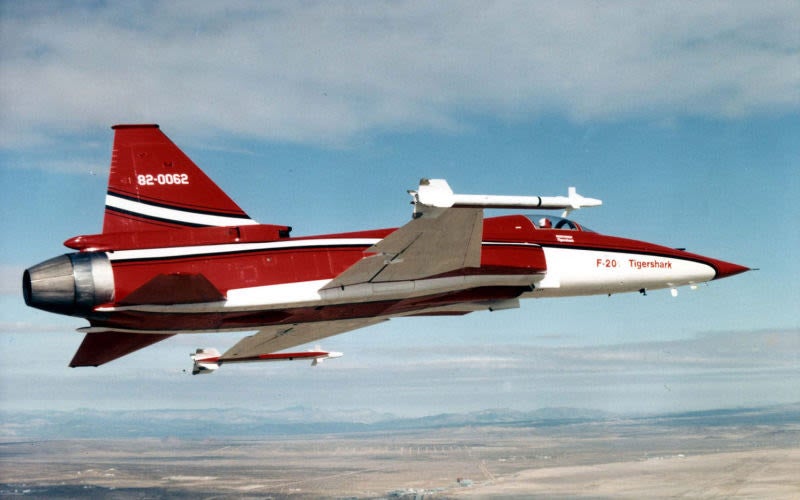
The first of three Northrop F-20 Tirgersharks, adorned with Northrop livery (US Air Force)
August 30, 1982 – The first flight of the Northrop F-20 Tigershark.
When the
!!!error: Indecipherable SUB-paragraph formatting!!!
first flew the
!!!error: Indecipherable SUB-paragraph formatting!!!
in 1959, they were bucking a trend. Fighters of the day had become significantly more complex—and expensive—and Northrop’s little hot rod of a fighter would set fa new standard for capable fighter aircraft that were effective over the battlefield but not prohibititvely expensive to operate or to service. The F-5 became an excellent low-cost export for nations friendly to the US, and diminutive fighter eventually saw service in 31 nations. By the late 1970s, restrictions put in place by the US government prohibited the export of the newest American fighter planes for fear that American technology might fall into enemy hands. So the Air Force initiated the FX program to develop a new simple yet powerful fighter to take on the role that had been filled by so well by the F-5.
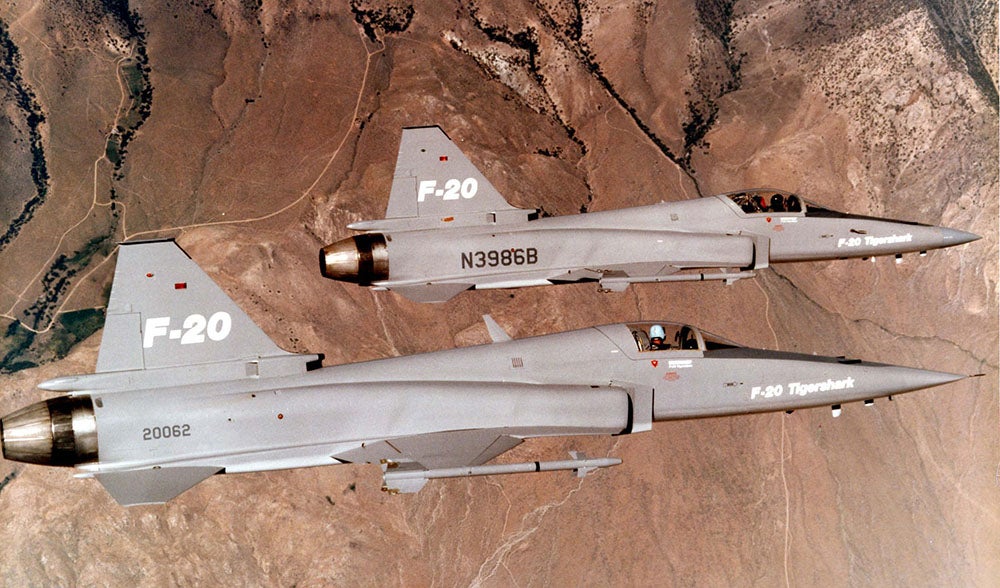
The first F-20, now in more military livery, flies alongside a second Tigershark with civilian registration (US Air Force)
Both !!!error: Indecipherable SUB-paragraph formatting!!! and !!!error: Indecipherable SUB-paragraph formatting!!! responded to the Air Force request for a new fighter. Northrop presented the F-5G, a further modernized and upgraded version of their venerable little fighter, and General Dynamics proposed the !!!error: Indecipherable SUB-paragraph formatting!!! , a downgraded version of the !!!error: Indecipherable SUB-paragraph formatting!!! currently in production for the US Air Force. At first, it appeared that Northrop might have gotten its timing just right to fulfill the expected windfall of export orders. However political waffling in the US Congress and changing export guidelines eventually permitted General Dynamics to export the F-16, along with its advanced technology. Northrop needed to improve the F-5G to match the F-16’s performance in the hopes of winning an export contract of its own.
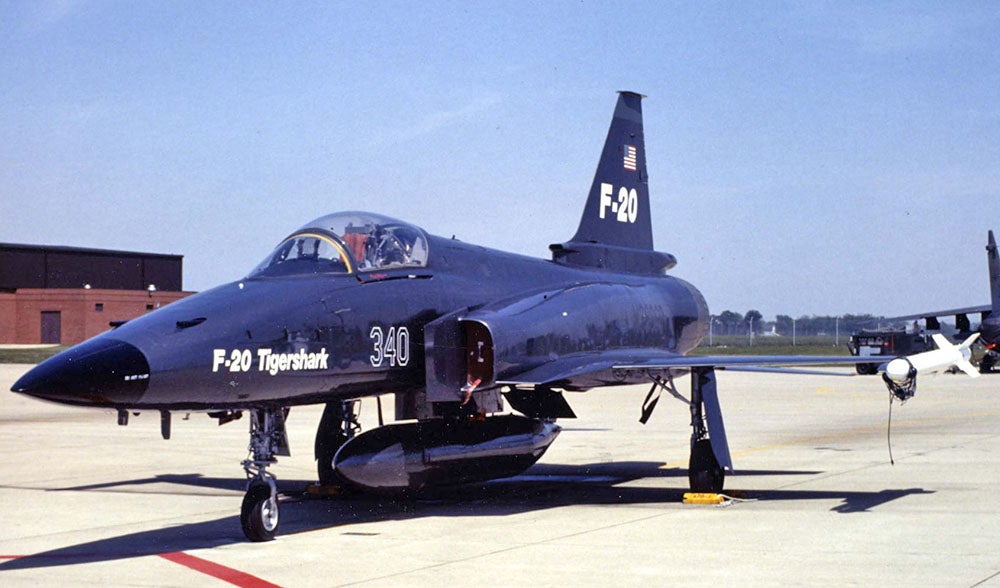
An F-20 in aggressor livery (US Air Force)
Part of that upgrade took the form of a change in branding. Many still saw the name “F-5" as denoting an inexpensive, second-tier aircraft meant for developing countries. So Northrop lobbied the Air Force to change the designation to F-20, and added the nickname Tigershark. To increase performance, the F-20 was fitted with the same !!!error: Indecipherable SUB-paragraph formatting!!! afterburning turbofan that was developed for the !!!error: Indecipherable SUB-paragraph formatting!!! , which gave the fighter a 60% improvement in thrust over the F-5G. It was also fitted with updated avionics and the ability to fire beyond-visual-range !!!error: Indecipherable SUB-paragraph formatting!!! air-to-air missiles, a capability that the F-16 was not able to match.
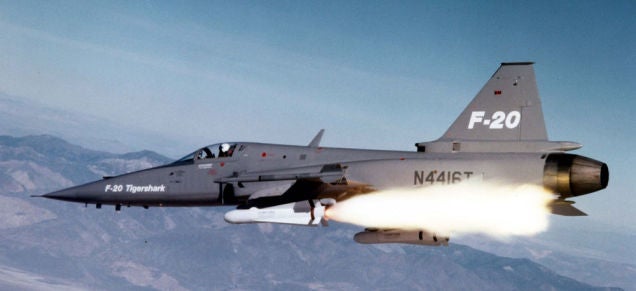
An F-20 fires an AGM-65 Maverick missile during a test flight (US Air Force)
Testing of the new fighter progressed admirably, and the Tigershark proved to be a formidable aircraft, providing at least as much punch as the F-16 but at a significantly lower cost. It’s single engine gave it a top speed of Mach 2, and it was armed with a pair of !!!error: Indecipherable SUB-paragraph formatting!!! cannons in the nose and five external hardpoints for a wide range of rockets, missiles and bombs. Ultimately, though, the F-20 proved to be a case of an excellent aircraft with tragically bad timing. With no support from the US government, changing export restrictions that favored the F-16, and a lack of any international buyers after most opted for the more advanced F-16, the F-20 was eventually canceled in 1986 after only three aircraft had been produced. Two of the prototypes were lost to crashes, and the third now resides at the !!!error: Indecipherable SUB-paragraph formatting!!! in Los Angeles.
!!! UNKNOWN CONTENT TYPE !!!
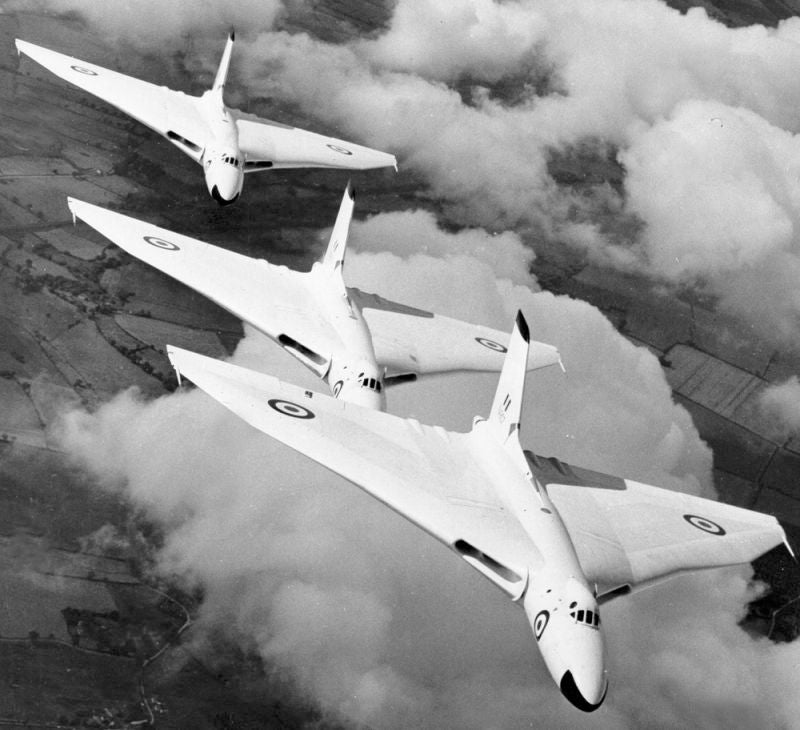
A trio of Vulcans painted in early anti-flash white in 1957 (RAF)
August 30, 1952 – The first flight of the Avro Vulcan. With the arrival of the operational turbojet engine by the end of WWII, military planners moved quickly to incorporate the new powerplant into their strategic and tactical bomber fleets. In England, development of new jet aircraft was closely tied to their nascent nuclear weapons program, which began to take shape in 1947. But the British Air Staff was working to stay ahead of the government, and had issued Specification B.35/46 the previous year that called for the creation of a new strategic bomber that would have four jet engines, a cruising speed of 500 knots, and a ceiling of at least 55,000 feet. !!!error: Indecipherable SUB-paragraph formatting!!! and !!!error: Indecipherable SUB-paragraph formatting!!! responded to the specification, with each making a unique aircraft that would eventually complement each other and serve side by side for many years. Handley Page offered their swept-wing !!!error: Indecipherable SUB-paragraph formatting!!! , which served as a bomber, reconnaissance aircraft and aerial tanker until 1993, while Avro developed the delta-winged Vulcan. Along with the !!!error: Indecipherable SUB-paragraph formatting!!! , these three aircraft became known as the !!!error: Indecipherable SUB-paragraph formatting!!! , and the types reached their heyday in the 1960s before slowly being supplanted by ballistic missiles and smaller aircraft with tactical nuclear munitions.
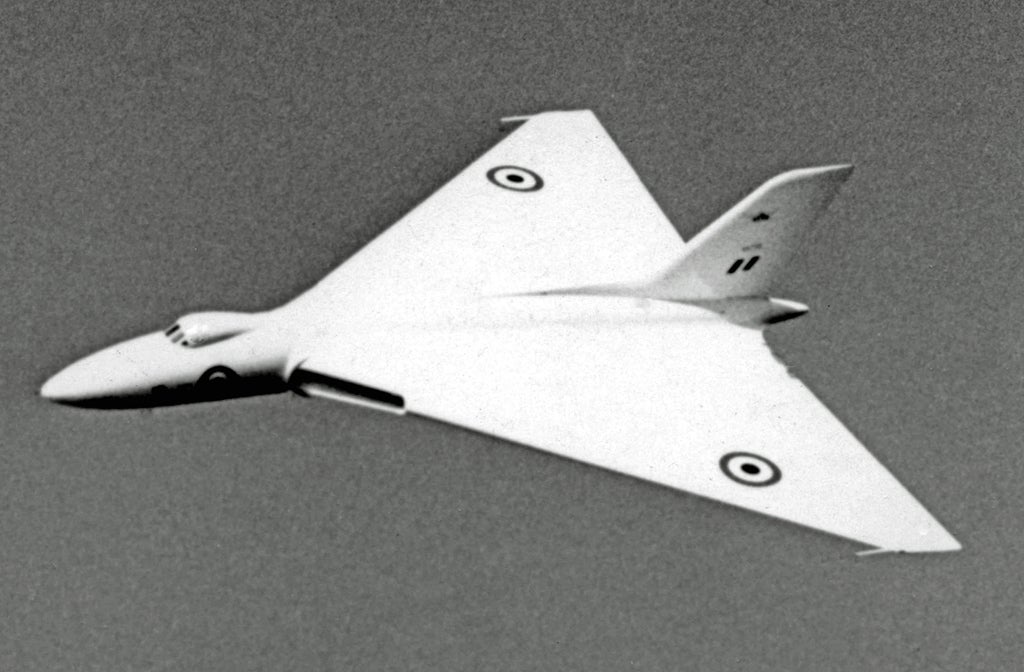 !!!CAPTION ERROR: MAY BE MULTI-LINE OR CONTAIN LINK!!!
!!!CAPTION ERROR: MAY BE MULTI-LINE OR CONTAIN LINK!!!
The Vulcan was one of the earliest planes to make use of the !!!error: Indecipherable SUB-paragraph formatting!!! at a time when their use was still novel and untested. To make sure their bomber would fly, Avro started out with a series of scale models to prove the concept. The first was the single-seat !!!error: Indecipherable SUB-paragraph formatting!!! which first flew in 1949. Though that aircraft crashed, killing the pilot, more models of the 707 followed which solved the problems of handling and ultimately resulted in a very stable aircraft. These scale tests continued until 1952, when Avro finally flew their full-sized bomber for the first time. But concerns about the design remained, and the British government ordered the production of the Valiant in the event that the Vulcan was a failure. Those fears proved to be unfounded, and the Vulcan turned out to be an extremely stable and capable aircraft. After ironing out a few remaining issues, the B.1 model entered service in 1956, and the B.2, with a redesigned wing and more powerful engines, entered service in 1960.
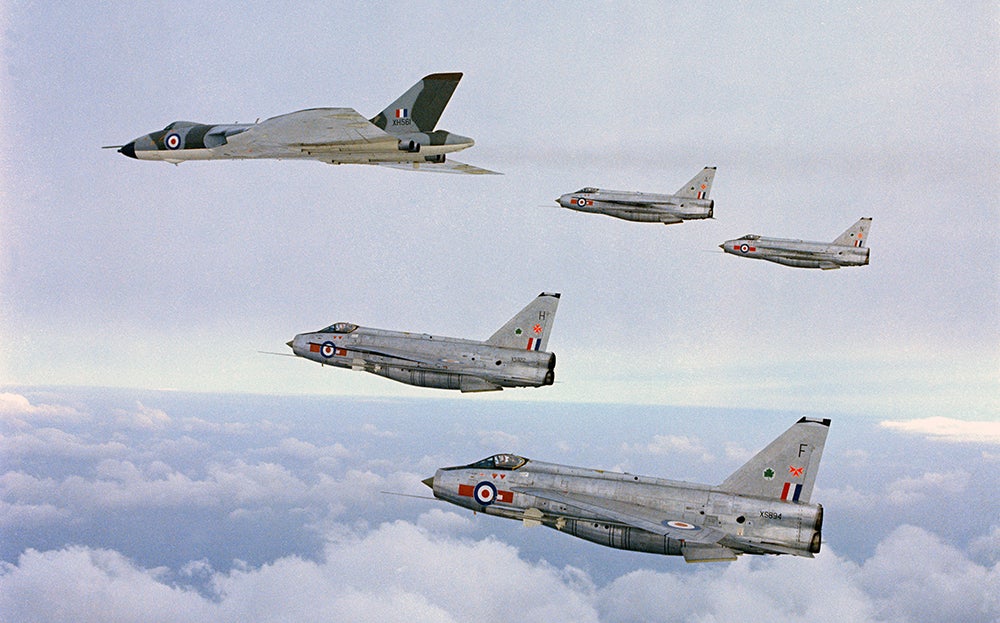
An Avro Vulcan B.2 of the Waddington Wing leads a quartet of English Electric Lightning F.6s of 5 Squadron to mark the formation of RAF Strike Command in 1968 (RAF)
The Vulcan was originally conceived as a long-range nuclear deterrent, and its range was demonstrated during a round-the-world tour soon after the aircraft entered service. Aerial refueling capabilities were also added to further increase range. Though originally designed as a long range nuclear bomber, the Vulcan was also capable of carrying up to 21,000 lbs of conventional bombs. Vulcans saw their first and only combat action in the !!!error: Indecipherable SUB-paragraph formatting!!! of 1982, flying an 8,000 mile round trip from tiny Ascension Island in the middle of the Atlantic Ocean to bomb Argentine forces fighting on the disputed islands. Avro produced a total of 136 Vulcans from 1956-1965, and they were retired by the RAF in 1984. Seven Vulcans remain as museum pieces or ground demonstrators, and one was airworthy before its final retirement in 2015.
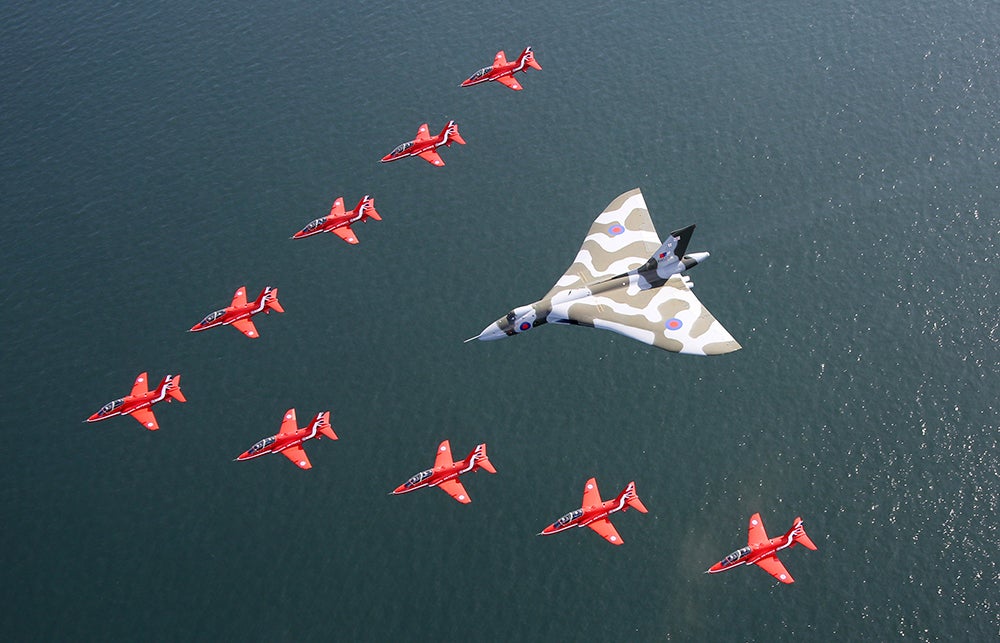
The final Vulcan flies in formation with the RAF Red Arrows demonstration squadron in a ceremony marking the Vulcan’s retirement in 2005 (UK Ministry of Defence)
!!! UNKNOWN CONTENT TYPE !!!
Short Takeoff
!!! UNKNOWN CONTENT TYPE !!!
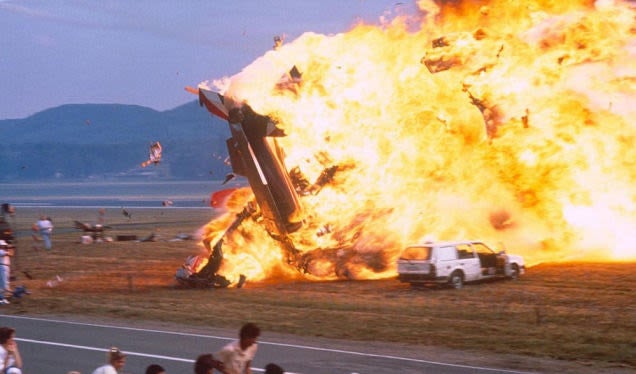
(Author unknown)
August 28, 1988 – Three aircraft from the Italian Air Force demonstration team
Frecce Tricolori
crash during an air show at Ramstein Air Force Base.
During the
Flugtag 88
air show, ten Italian
!!!error: Indecipherable SUB-paragraph formatting!!!
trainer aircraft were performing a “pierced heart” maneuver in which two crossing groups of aircraft are split by a single aircraft flying a perpendicular course towards the crowd. As the planes crossed, the solo aircraft struck two others in the formation, raining debris and burning fuel onto the audience below. Sixty-seven spectators were killed, along with the three Italian pilots, and 346 were injured. Germany declared a three-year moratorium on public air shows, and new rules were put in place that required greater viewing distances and banned maneuvers that were directed towards the crowd.
!!! UNKNOWN CONTENT TYPE !!!
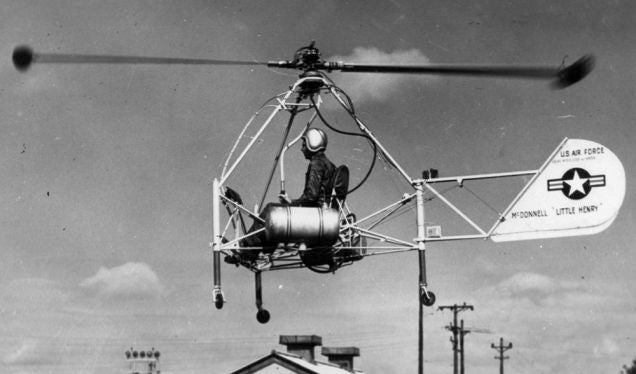
(US Air Force)
August 29, 1947 – The first flight of the McDonnell XH-20 Little Henry,
an experimental light helicopter developed for the US Air Force. Unlike traditional helicopters of the time that were powered by piston engines, the Little Henry was powered by small
!!!error: Indecipherable SUB-paragraph formatting!!!
engines placed at the end of each of the two rotor blades. Even though the XH-20 flew successfully, the ramjet engines were found to be noisy and burned large amounts of fuel, and plans to develop a larger, two-seat helicopter, the XH-29, were abandoned. Two Little Henrys were built, and the first is displayed at the National Museum of the United States Air Force.
!!! UNKNOWN CONTENT TYPE !!!

(NASA)
August 30, 1984 – The first flight of Space Shuttle Discovery , the third of five !!!error: Indecipherable SUB-paragraph formatting!!! placed in service by NASA. Discovery’s first flight, !!!error: Indecipherable SUB-paragraph formatting!!! , took off from Kennedy Space Center in Florida and returned to Edwards Air Force Base in California six days later after deploying a commercial communications satellite and performing scientific experiments. Discovery went on to serve for 27 years and spent a total of 365 days in space over the course of 39 missions, including the placement of the !!!error: Indecipherable SUB-paragraph formatting!!! into Earth orbit. In all, Discovery traveled 149,000,000 miles and completed 5,830 orbits before its retirement in 2011. The orbiter is now on display at the Smithsonian’s !!!error: Indecipherable SUB-paragraph formatting!!! in Virgina.
!!! UNKNOWN CONTENT TYPE !!!

(NASA)
August 30, 1983 – Guion “Guy” Bluford becomes the first African American to fly in space. Born on November 22, 1942 in Philadelphia, Pennsylvania, Bluford obtained a degree in aerospace engineering from Pennsylvania State University and a master’s degree and PhD in aerospace engineering from the US Air Force Institute of Technology. As a fighter pilot, Bluford flew 144 combat missions in Vietnam and served as a flight instructor before being selected for the NASA astronaut corps in 1979. Bluford flew in space for the first time onboard the Space Shuttle !!!error: Indecipherable SUB-paragraph formatting!!! on !!!error: Indecipherable SUB-paragraph formatting!!! , the first Shuttle mission to both launch and land at night. With three other flights on !!!error: Indecipherable SUB-paragraph formatting!!! , !!!error: Indecipherable SUB-paragraph formatting!!! and !!!error: Indecipherable SUB-paragraph formatting!!! , Bluford spent a total of 688 hours in space. He retired from NASA in 1993, and was inducted into the !!!error: Indecipherable SUB-paragraph formatting!!! in 1997 and the !!!error: Indecipherable SUB-paragraph formatting!!! in 2010.
!!! UNKNOWN CONTENT TYPE !!!
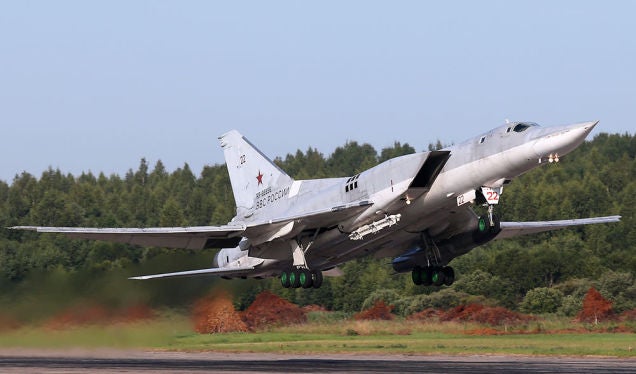 !!!CAPTION ERROR: MAY BE MULTI-LINE OR CONTAIN LINK!!!
!!!CAPTION ERROR: MAY BE MULTI-LINE OR CONTAIN LINK!!!
August 30, 1969 – The first flight of the Tupolev Tu-22M, a long-range supersonic land and maritime bomber. The swing wing Tu-22M, NATO reporting name Backfire , is powered by a pair of !!!error: Indecipherable SUB-paragraph formatting!!! turbofans and is capable of a maximum speed of Mach 1.8. Developed from the notoriously poor !!!error: Indecipherable SUB-paragraph formatting!!! , the Backfire first became known to the West through satellite photos taken in 1970, and was unveiled in 1980 and began flying simulated attack missions against NATO naval forces. The Backfire made its first combat appearance over Afghanistan in 1987, and more recently flew in support of the Syrian government in 2015, missions which continue to this day, though it continues to suffer from poor construction and maintenance difficulties. A total of 497 were built from 1967-1997.
!!! UNKNOWN CONTENT TYPE !!!
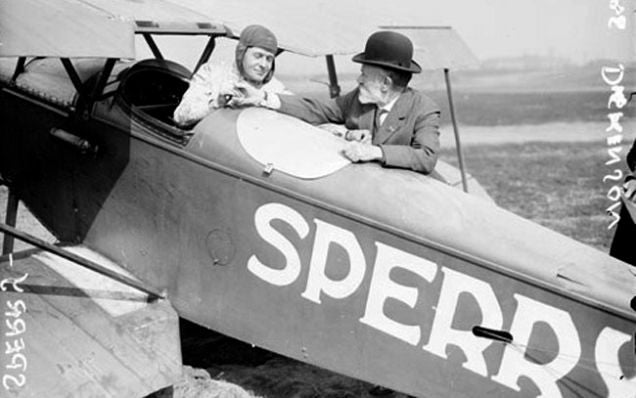 !!!CAPTION ERROR: MAY BE MULTI-LINE OR CONTAIN LINK!!!
!!!CAPTION ERROR: MAY BE MULTI-LINE OR CONTAIN LINK!!!
August 30, 1913 – American inventor Lawrence Sperry successfully demonstrates the first autopilot. Developed by the !!!error: Indecipherable SUB-paragraph formatting!!! in 1912, the first autopilot was a gyroscopic stabilizing device that hydraulically controlled the aircraft’s elevators and rudder and was capable of keeping an airplane level and on a compass heading, thus greatly relieving pilot workload on long flights. !!!error: Indecipherable SUB-paragraph formatting!!! demonstrated his autopilot in Paris in 1914, flying while holding his hands in the air to show that the autopilot was in fact in control of the aircraft. The first autopilots were used on American military aircraft by 1930 and, in 1947, a US Air Force !!!error: Indecipherable SUB-paragraph formatting!!! made the first transatlantic flight, from takeoff to landing, completely controlled by the autopilot.
!!! UNKNOWN CONTENT TYPE !!!
Connecting Flights
!!! UNKNOWN CONTENT TYPE !!!
!!! UNKNOWN CONTENT TYPE !!!
!!! UNKNOWN CONTENT TYPE !!!
!!! UNKNOWN CONTENT TYPE !!!
!!! UNKNOWN CONTENT TYPE !!!
If you enjoy these Aviation History posts, please let me know in the comments. And if you missed any of the past articles, you can find them all at
!!!error: Indecipherable SUB-paragraph formatting!!!
. You can also find more stories about aviation, aviators and airplane oddities at
!!!error: Indecipherable SUB-paragraph formatting!!!
.
!!! UNKNOWN CONTENT TYPE !!!
 HammerheadFistpunch
> ttyymmnn
HammerheadFistpunch
> ttyymmnn
08/30/2019 at 12:42 |
|
I always felt bad for the F20 and to a lesser degree the F5. It was pretty clear the cards were stacked against it anytime it came to the table despite it being an ideal solution to many problems.
 facw
> ttyymmnn
facw
> ttyymmnn
08/30/2019 at 12:58 |
|
In other aviation news, I saw today that the National Air and Space Museum removed its X-15 earlier this week:
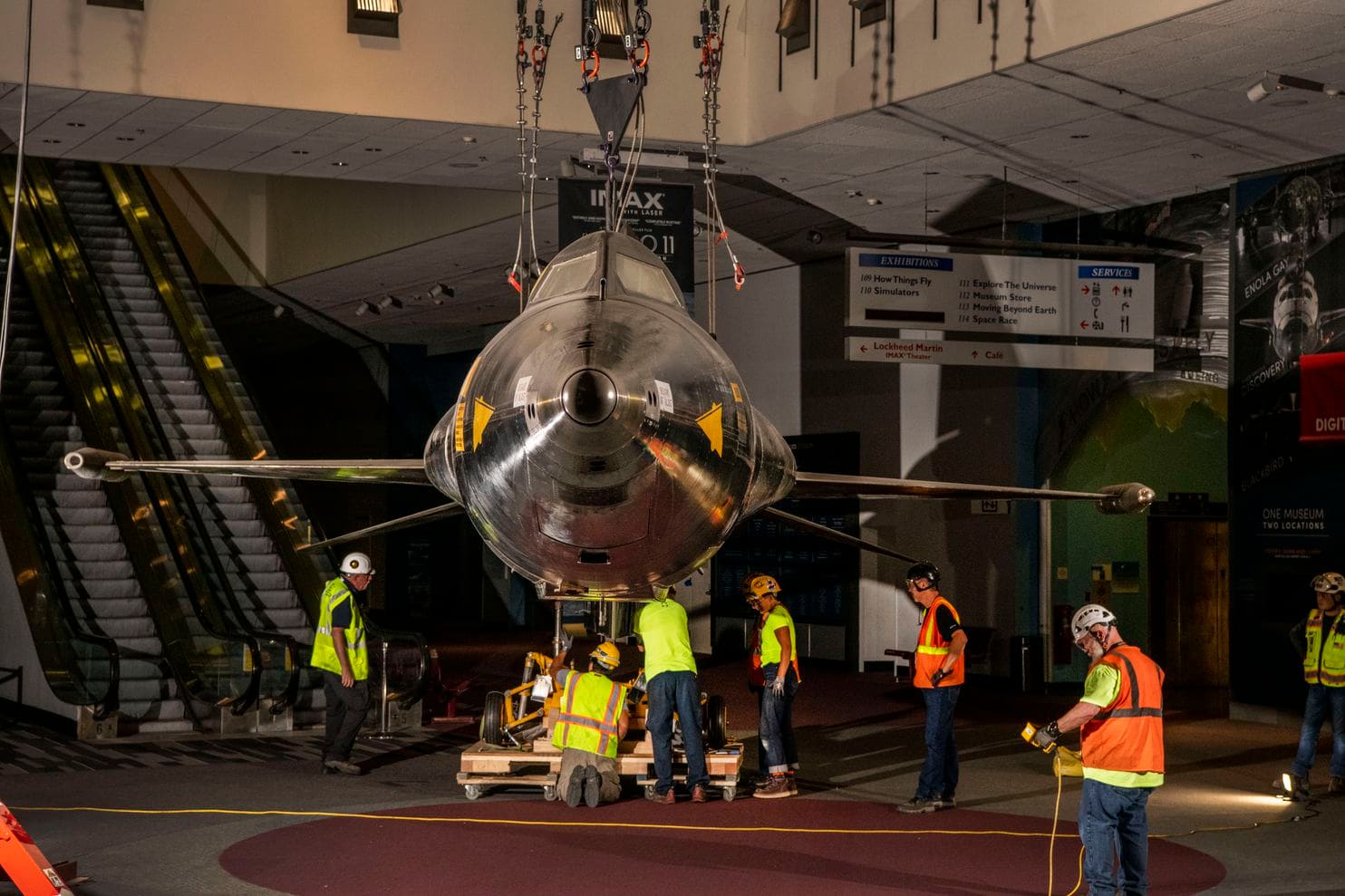
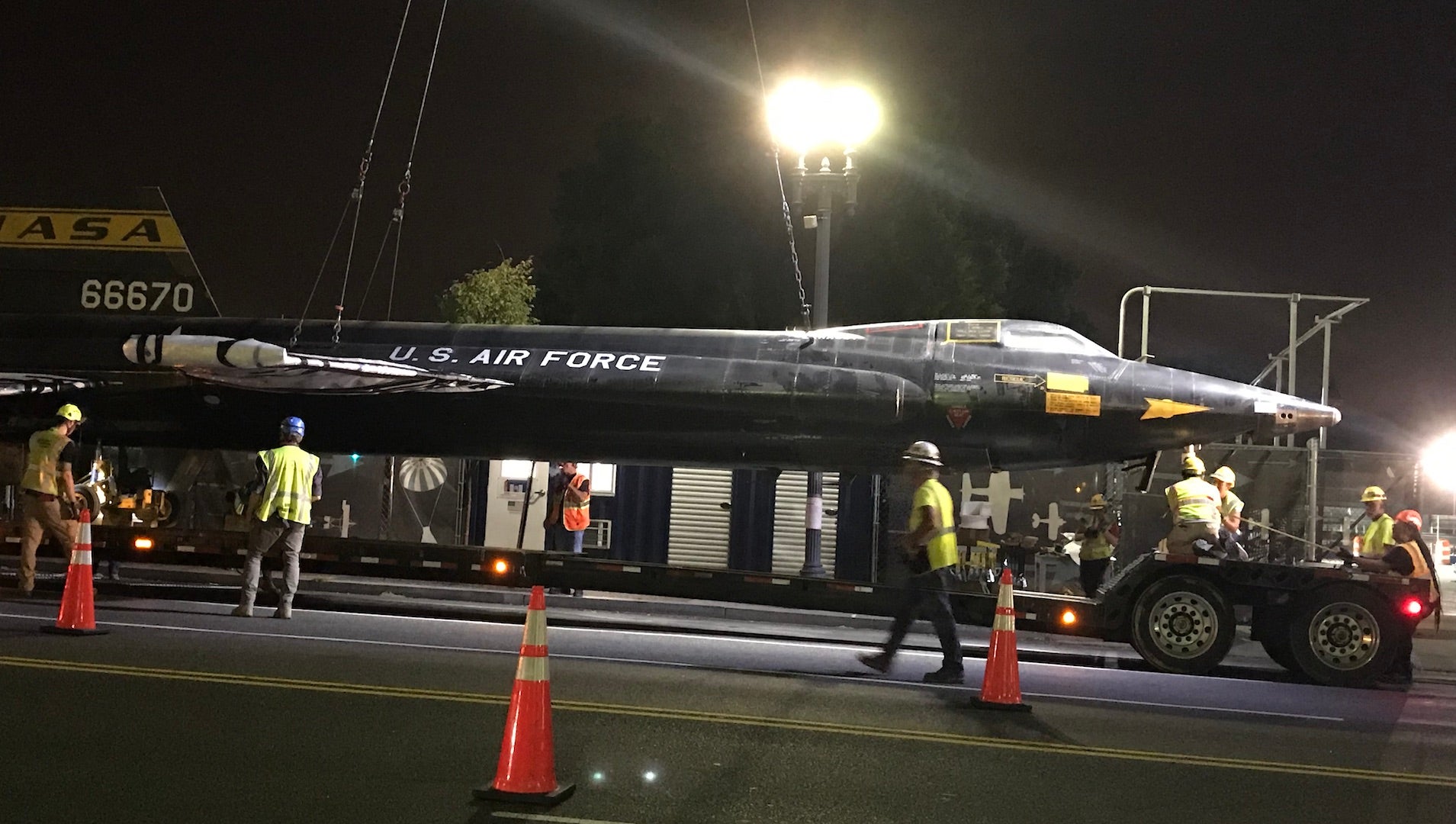
It’s going out to Dulles while the museum on the M all is renovated, though it’s not clear from what I’ve read if it will be on display at Udvar-Hazy or just in storage. They expect it to be around four years before it makes its way back to the M all.
Smithsonian’s legendary rocket plane heads for storage during renovations
 facw
> ttyymmnn
facw
> ttyymmnn
08/30/2019 at 13:07 |
|
On the topic of the Frecce Tricolori, I saw one of their G.91s at the Museum of Flight. It was badly in need of new paint, or at least a wax:
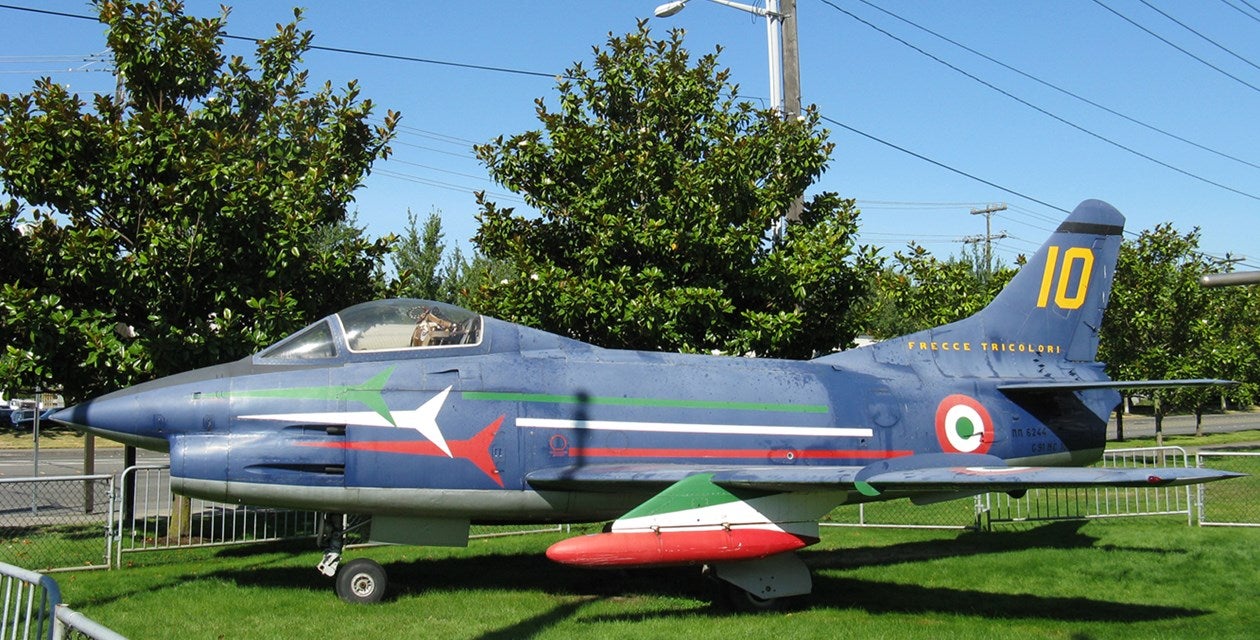
 InFierority Complex
> facw
InFierority Complex
> facw
08/30/2019 at 13:14 |
|
http://www.royalcarcaremiami.com/page/Royal-Car-Care-Italian-Fiat-Tricolori-Polishing-Detail.html
Funny you should mention that. Found this story a few months back although it looks like they did the work 8 years ago now. Always meant to post this for Svend :P
 facw
> InFierority Complex
facw
> InFierority Complex
08/30/2019 at 13:18 |
|
Their website has a much shinier picture of it inside, but it was definitely outside on Monday, and I’m pretty sure that was the case when I was there in 2012 as well.
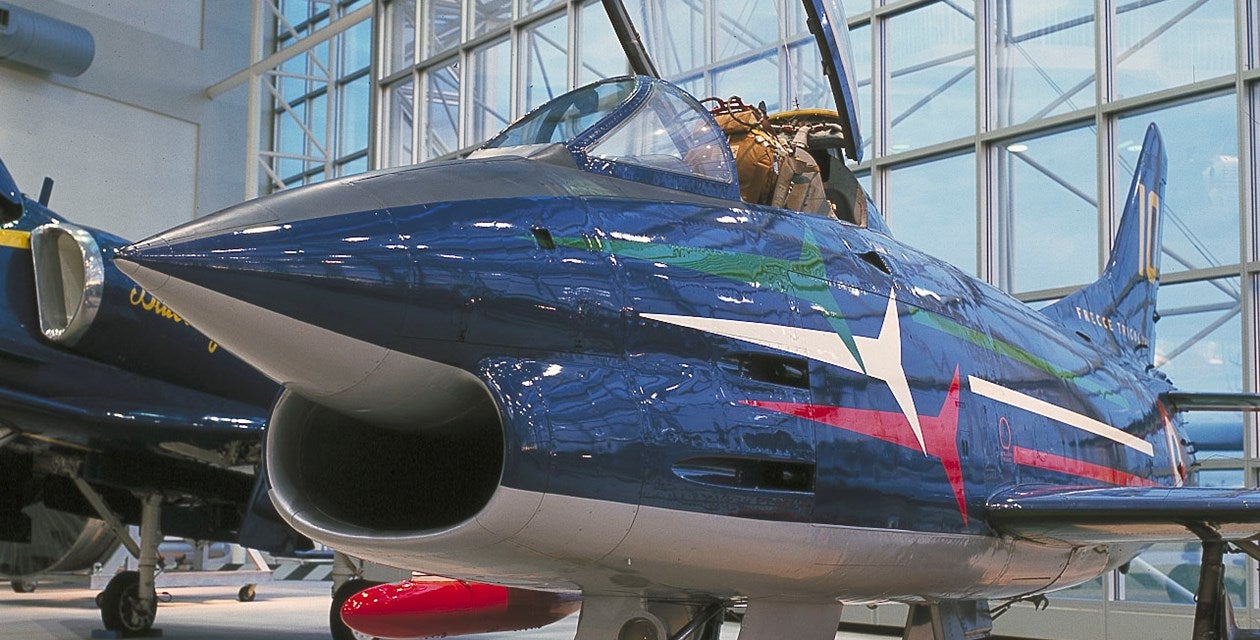
I apparently don’t have a close up of it, but this is how it looked when I was there:
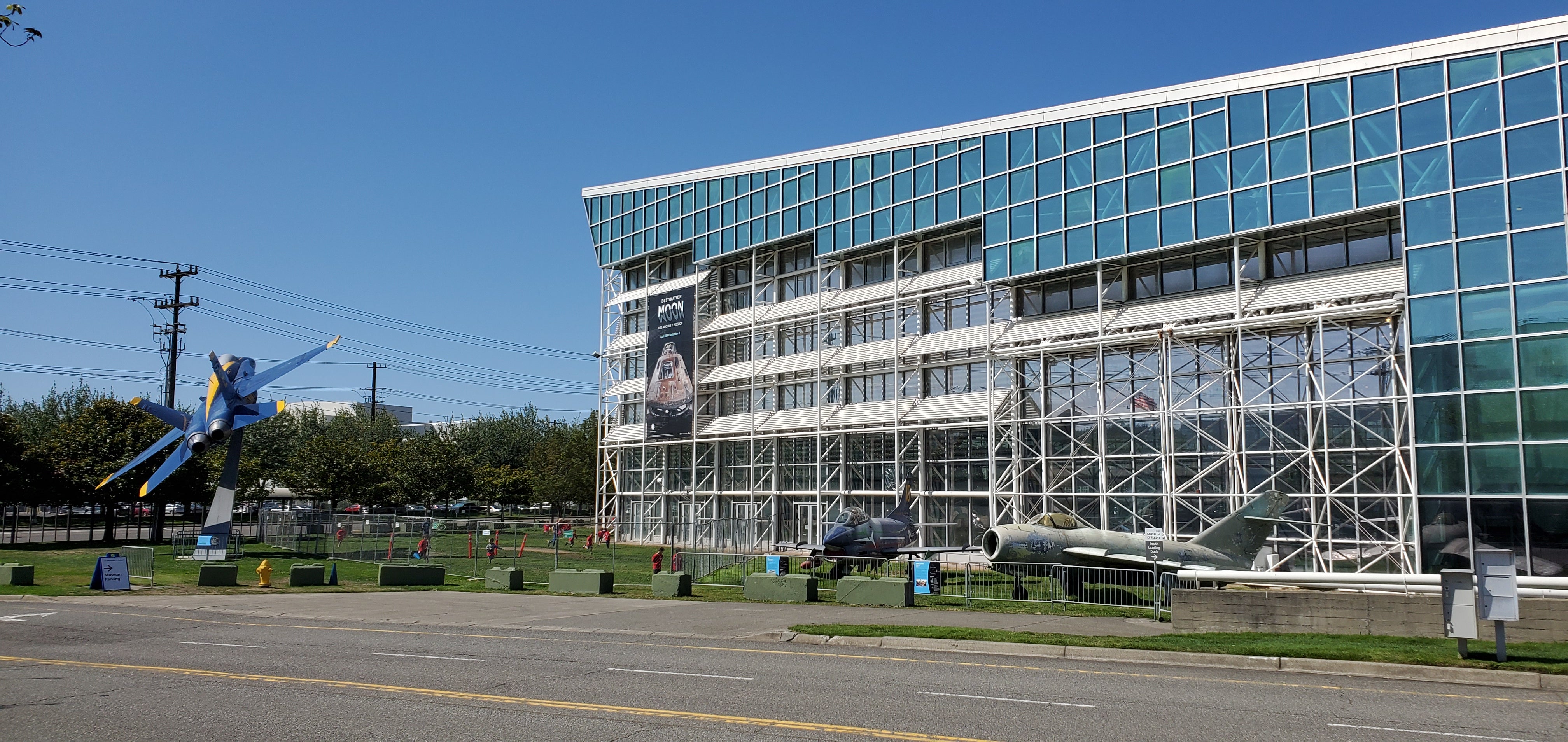
To be honest I think the photo overstates how bad it was, since you can’t see how faded the sides are, and the photo shows a bit a gloss that was not as obvious in person.
Edit: zoomed because Kinja zoom is doing bad things:
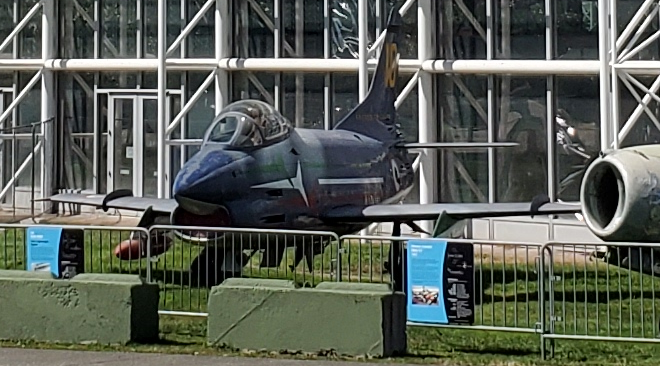
 Only Vespas...
> HammerheadFistpunch
Only Vespas...
> HammerheadFistpunch
08/30/2019 at 13:41 |
|
Same story with the YB-35/YB -49 vs. the Convair B-36. Politics, Texas Politics in that case, gave us an outdated bomber.
 HammerheadFistpunch
> Only Vespas...
HammerheadFistpunch
> Only Vespas...
08/30/2019 at 13:46 |
|
To be fair, the flying wing wasn’t quite ready for primetime just yet.
 Hamtractor
> ttyymmnn
Hamtractor
> ttyymmnn
08/30/2019 at 14:25 |
|
I always loved the Tigershark, sooooo sexy. Clean lines, fast as hell, a knife-fighter. Hell, we could fire that line up before the F-22 line and just fill the skies with these bad boys, gift a hundred or two to Taiwan. I think in a near-peer fight, our F-35s and F-22s will be attrited in a hurry. Being able to put a couple hundred extra pure dogfighters in the sky is gonna matter after the first two or three weeks of open warfare...
 user314
> Only Vespas...
user314
> Only Vespas...
08/30/2019 at 14:30 |
|
Eh. Northrop had a great plane for WWII , but the engines and props on the -35 were crap, seriously hampering the range and payload, and by the time it was flying technology had passed it by . The - 49 was even worse, turning what was a long range heavy bomber into a short-legged light striker. The B-47 was already doing that job, without the Wing’s teething issues.
 facw
> Hamtractor
facw
> Hamtractor
08/30/2019 at 14:35 |
|
The problem of course is that the F-16 is just as good, if not better. In any event Taiwan has their own off-brand F-16 (because we wouldn’t sell them planes, but would sell them tech), the horribly named F-CK-1:
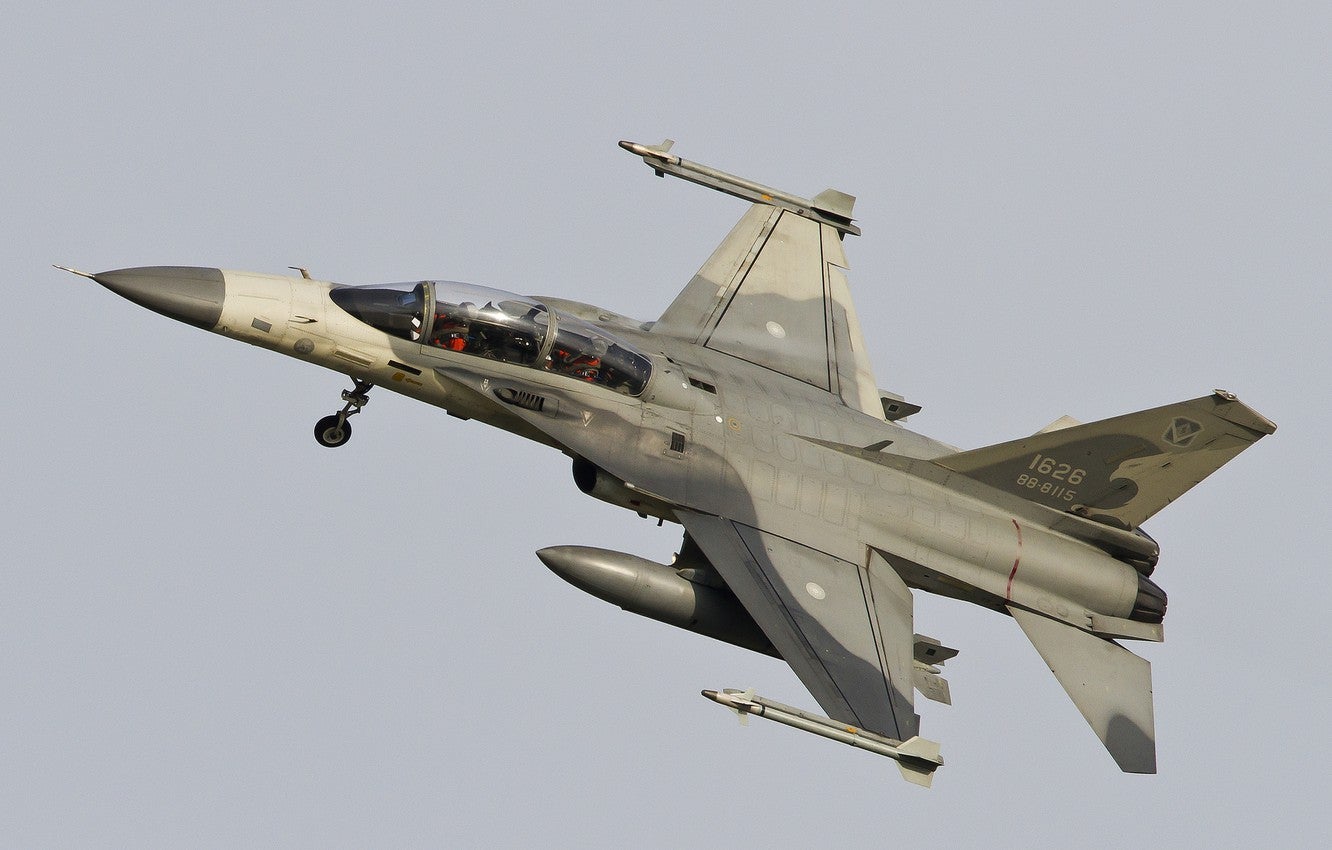
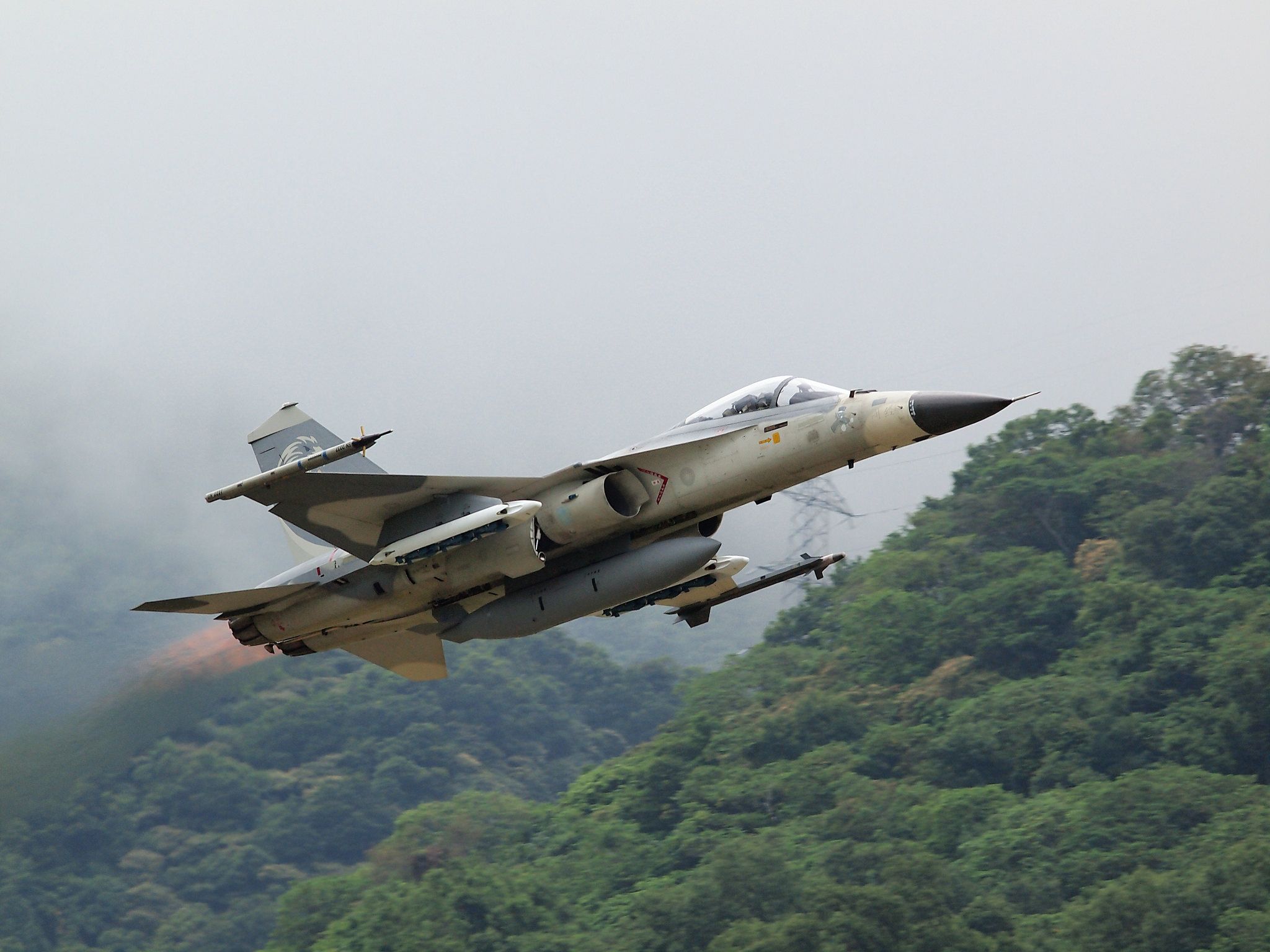
 Highlander-Datsuns are Forever
> ttyymmnn
Highlander-Datsuns are Forever
> ttyymmnn
08/30/2019 at 15:00 |
|
Never got to ride on a tri star, only a 727. I have not been on a wide body since I went to France when I was a teenager. Middle row, not fun.
 Distraxi's idea of perfection is a Jagroen
> ttyymmnn
Distraxi's idea of perfection is a Jagroen
> ttyymmnn
08/30/2019 at 15:09 |
|
I saw a Backfire at Farnborough back in the 90s. They look exactly like a 5 year old’s drawing of a fighter plane - the basic elements are there but the proportions are all wrong.
 ttyymmnn
> Highlander-Datsuns are Forever
ttyymmnn
> Highlander-Datsuns are Forever
08/30/2019 at 15:10 |
|
I flew on a DC-10 once, and it returned to the airport shortly after takeoff because of a gear malfunction. Needless to say, we landed safely, but the rebook was on a different airliner. So I’ve got about 30 minutes on the type.
 ttyymmnn
> facw
ttyymmnn
> facw
08/30/2019 at 15:11 |
|
I always liked the G91, particularly the similarity to the F-86D.
 ttyymmnn
> facw
ttyymmnn
> facw
08/30/2019 at 15:12 |
|
Can’t wait to see what they do with the flagship museum. We went the first summer it was open (76 or 77) and I was blown away. Was also at the UH Center the first week it opened back in the day. The collection has grown considerably since that day.
 facw
> Highlander-Datsuns are Forever
facw
> Highlander-Datsuns are Forever
08/30/2019 at 15:12 |
|
Hmm, now that I think about it, I’m not sure I’ve ever flown on a trijet of any sort (and it seems pretty unlikely to happen at this point). Maybe sometime when I was really young?
 ttyymmnn
> HammerheadFistpunch
ttyymmnn
> HammerheadFistpunch
08/30/2019 at 15:13 |
|
The flying wing was everything the AF asked for, with the piston engines. They ruined it when they slapped jets on it. But the AF had to have jets. It was the era.
 user314
> ttyymmnn
user314
> ttyymmnn
08/30/2019 at 16:15 |
|
In point of fact, the AAF gave Northrop the engines and counter rotating props, which were shit, for the B-35, and then infighting between the AAF, Pratt & Whitney and Hamilton Standard over who should fix the shitty engines and props led Jack Northrop to ground the XB-35 himself. The AAF then “encouraged” Northrop to reengine with jets, at which point the YB-49 actually met it’s performance goals, but the thirsty thirsty J35s killed the range. Aerial refueling would have mitigated that issue , but by that point the USAF already had the B-47 for the short-range bomber role and the B-52 would soon be pushing the B-36 into retirement.
 ttyymmnn
> user314
ttyymmnn
> user314
08/30/2019 at 16:19 |
|
I’m familiar with the story, but I guess my point is more that had the AF provided the proper propeller engines, the YB-35 might actually have been successful. It’s more fuel for the fire that the AF never really wanted the airplane to be successful. It was an idea before its time, that was ultimately borne out with the B-2.
 ttyymmnn
> Distraxi's idea of perfection is a Jagroen
ttyymmnn
> Distraxi's idea of perfection is a Jagroen
08/30/2019 at 16:20 |
|
Compared to the B-1, the Backfire was yet another American idea that the Russians would take and make half again as big and twice as heavy.
 Hamtractor
> facw
Hamtractor
> facw
08/30/2019 at 16:36 |
|
Except that the F-20 was significantly cheaper... Roughly 90% of the capability for around 60% of the cost. Obviously, these days that plane would cost $75 million a pop and have some weird software issue that required contractor support for the life of the airframe to the tune of $1.8 million annually and super expensive paint or some shit... But it woulda been sweet if we had bought 500 of them and stashe d em, lol...
 user314
> ttyymmnn
user314
> ttyymmnn
08/30/2019 at 16:40 |
|
Oh, I agree, just wanted to add some background for anyone that didn’t know that part of the saga.
 facw
> Hamtractor
facw
> Hamtractor
08/30/2019 at 16:43 |
|
I’m not convinced, things are always cheaper before you build them...
 ttyymmnn
> user314
ttyymmnn
> user314
08/30/2019 at 17:10 |
|
Thanks!